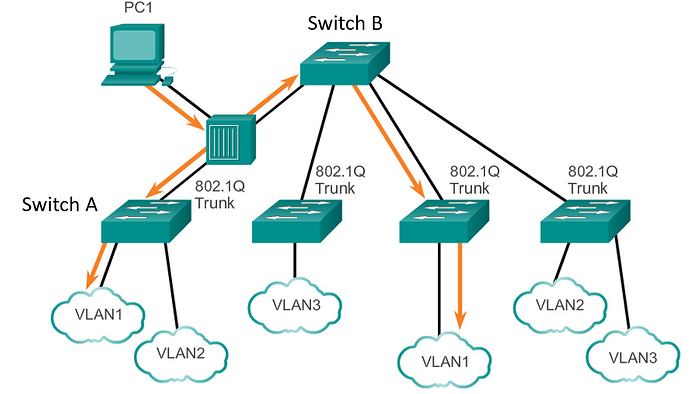I am fairly new to networking having obtained the CCENT ICND1 Certification. I am hoping to recertify and obtain the complete CCNA cert with the help of this website. I work in telecommunications with more emphasis on radio frequency and wireless point to point as well as point to multipoint technology. There involves some networking , mainly layer 2. I am hoping to gain a deeper insight and understanding of networking, primarily L3 functionalities and begin exploring the world of networks. Happy to meet everyone! 
Hello Kevin!
Welcome on board! Great to have you here. I trust that you will find Networklessons useful for you. If you have any questions, we’re here to help!
Good luck in your studies and in your exams!
Laz
Hello Kevin,
Welcome on board  With your wireless experience, I think the L2 stuff in ICND1 was not too difficult to grasp? I think if you enjoy wireless networking, you’ll also like the wired version
With your wireless experience, I think the L2 stuff in ICND1 was not too difficult to grasp? I think if you enjoy wireless networking, you’ll also like the wired version 
Good luck studying!
Rene
Thank you for the kind words. So far the lessons are going good, very well explained and I love the additional discussions on the forum. These questions and answers clarify any doubts, or lack of understanding I may have from reading the main lessons! 
Hi Rene, thank you for the welcome. The concepts in ICND1 was not that difficult to grasp. I did however, take a long time to understand VLANS, 802.1Q trunking. I still have some misunderstandings about the native vlan ( I know the definition and the commands); not to sure when the situation arises and the need for changing it. If you can provide additional explanation (besides the existing post about native vlan you have) that will be great.Additionally, will you be providing any material on CCNA security (General concepts and not focusing on ASA, I use Fortinet firewalls alot and most companies in Trinidad uses Fortinet) & CCNA Voice ? Or is the site focused on Routing and Switching ? Thank you for your time and kind words.
Regards,
Kevin
Hello Kevin
Hopefully this will help you out. When you configure a trunk between two switches, the trunk interfaces on both ends of the link will ALWAYS expect a tag in the frame indicating on which VLAN the frame should be placed. If a frame arrives on one of those trunk interfaces WITHOUT a tag, what will the switch do with it? To which VLAN does it belong? It belongs to the native VLAN. By default the native VLAN is 1, so if you don’t configure the native VLAN, any such frame will be placed on VLAN 1.
Now if your network is configured correctly, you shouldn’t receive any frames without tags on trunk ports. But if you have a (very bad) configuration like the following:
then you may get untagged frames on trunk ports. Notice that PC1 is connected to a HUB and the hub connects two switches together over a trunk link. Any untagged frame from PC1 will go to the trunk ports of both SwitchA and SwitchB. What do the switches do with then untagged frames? They place it on the default native VLAN 1. Notice where else the frame propagates…
Concerning other topics and other certifications, Rene is always in the process of enriching the content of Networklessons. If you have a topic that you would like covered, take a look at the following link and make a suggestion for new content.
I hope this has been helpful!
Laz
Thank you very much for your help and time taken to explain. Please note it is very much appreciated!
Regards,
Kevin
Hey Kevin i see you have some knowledge of telecommunications. I am very interested in learning more about layer 2 protocols. Wis hyou the best. I am breaking new here , I took the fitst two cisco classes fore ccent. I am now motivating myselfto review with Rene and learn much more so i can get the CCENT CCNA CCNP one step at a time.
